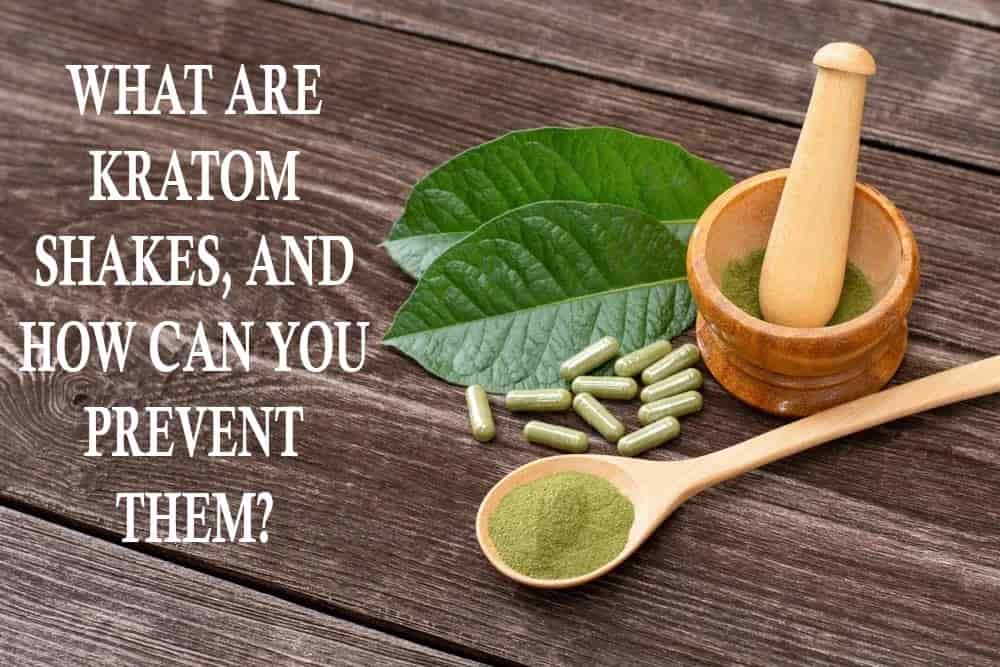

Disclaimer: This article is for educational purposes only and does not provide medical advice. Kratom is not approved by the FDA for any medical use. If you experience any adverse effects or have concerns about kratom consumption, consult a healthcare professional immediately.
There’s been tons of articles about kratom’s supposed energizing and mood-enhancing benefits. And while more research is still needed to confirm those positive effects, anecdotal evidence seems to confirm them.
However, like any substance, kratom may also cause unintended side effects when used improperly, such as dizziness or upset stomach.
Another side effect some users report is muscle tremors referred to in the community as “kratom shakes.” In this article, we’ll explore what kratom shakes are, their possible causes, and if it’s possible to prevent them.
What Are Kratom Shakes?
Kratom shakes is a term used to describe involuntary muscle tremors that can sometimes occur after consuming kratom. These tremors may present as rhythmic, jerky movements in different parts of the body, such as the hands, legs, or head.
Users who have experienced kratom shakes describe symptoms such as:
- Dizziness
- Jerking movements of the limbs
- Head shaking
- Difficulty focusing due to tremors
While most cases of kratom shakes are mild and temporary, they can be concerning, especially for new users. In more severe cases, tremors may interfere with everyday activities and cause discomfort.
For instance, a user on one of the kratom forums reported that four hours after consuming kratom, they experienced dizziness, followed by limb jerking and head shaking so severe that they couldn’t see straight.
Are There Documented Cases of Kratom Shakes?
Yes, there are documented cases of muscle tremors and seizures related to kratom use in the medical literature. Here are two examples published in medical journals:
Case 1: Kratom Withdrawal Symptoms
The study on kratom withdrawals and effects describes a 44-year-old man with a history of alcohol dependence who reported experiencing withdrawal symptoms after regular kratom use. His symptoms included:
- Restlessness
- Tremors
- Sweating
- Cravings for kratom
While his symptoms were attributed to withdrawal rather than kratom shakes specifically, his case highlights the importance of responsible kratom use.
Case 2: Kratom-Induced Seizures
The second documented case is a 27-year-old man with a history of ADHD and substance use disorder who experienced tonic-clonic seizures a few hours after consuming kratom.
His brother reported that he began flailing his arms before the seizure, resembling someone swatting at imaginary bugs. The medical team diagnosed him with kratom-induced tremors, which escalated into a seizure.
What Causes Kratom Shakes?
While there’s not enough research to conclusively prove the causes of kratom shakes, evidence suggests that they may be caused by product purity, dosage, and underlying health conditions:
- Product purity: The purity of kratom plays a significant role in its effects. Lab-tested kratom from reputable vendors like Authentic Kratom is your safest bet to ensure you get a pure and quality product without harmful additives.
- Dosage: Like in the case of any other substance, taking high doses of kratom may increase the risk of side effects, including kratom shakes.
- Underlying health conditions: As suggested by the study on a man with a history of ADHD, individuals with pre-existing health conditions, especially those affecting the nervous system, may be more exposed to kratom shakes.
Based on that, we can pinpoint several practices that might minimize the risk of kratom shakes, such as:
- Buying kratom from certified vendors
- Taking kratom responsibly
- Avoiding taking kratom if you have any pre-existing neurological conditions
Final Word on Kratom Shakes
Kratom shakes might not be the most frequently reported side effect of kratom, but research and anecdotal evidence suggest that they can occur, especially after consuming high doses or in the case of underlying health issues.
As said, however, we need more studies on kratom’s effects to make sure claims. At the moment, we can only take educated guesses based on anecdotal evidence.
For now, the best advice is to always prioritize your health and safety by consulting with a healthcare professional if you experience any adverse reactions.


